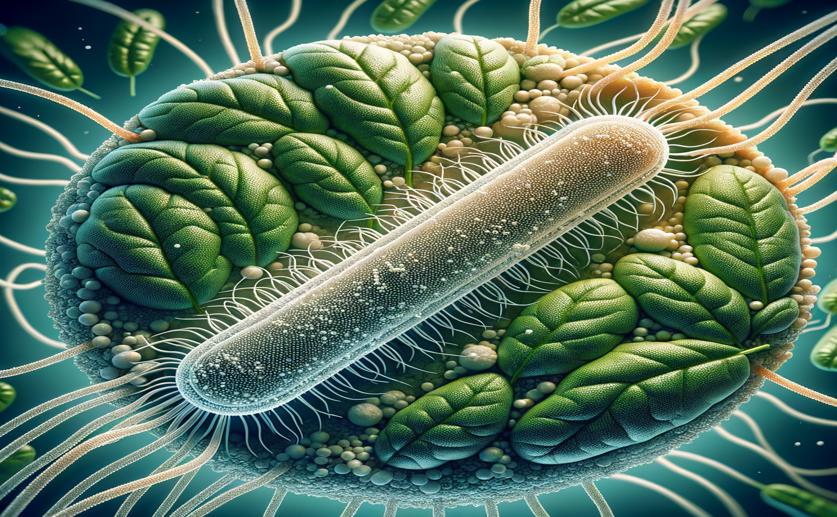
How Salmonella Bacteria Cling to Spinach Without Sugar Signals
Jim Crocker
21st April, 2024

Image Source: Natural Science News, 2024
Key Findings
- Researchers found that a molecule called FimH helps Salmonella stick to spinach leaves
- Unlike in humans, Salmonella's attachment to spinach doesn't rely on a sugar called mannose
- A spinach enzyme could be a new target to prevent Salmonella contamination in produce
AgricultureHealthPlant Science
References
Main Study
1) It takes two to attach - endo-1,3-β-d-glucanase as a potential receptor of mannose-independent, FimH-dependent Salmonella Typhimurium binding to spinach leaves.
Published 18th April, 2024
https://doi.org/10.1016/j.fm.2024.104519
Related Studies
2) Interrelationships of food safety and plant pathology: the life cycle of human pathogens on plants.
3) The role of cellulose and O-antigen capsule in the colonization of plants by Salmonella enterica.
Journal: Molecular plant-microbe interactions : MPMI, Issue: Vol 20, Issue 9, Sep 2007
4) Colonization of tomato plants by Salmonella enterica is cultivar dependent, and type 1 trichomes are preferred colonization sites.



 19th April, 2024 | Jim Crocker
19th April, 2024 | Jim Crocker